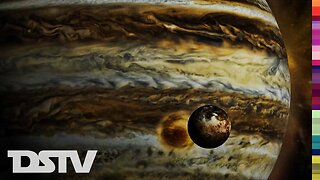Premium Only Content

Gustav Holst - V. Saturn: The Bringer of Old Age (The Planets)
In ancient times, long before the advent of telescopes, Saturn was the most distant planet known. In the Roman pantheon, Saturn was a god of time, which connects well to Holst’s movement, “The Bringer of Old Age.” In truth, Saturn is the same age as every other planet in our solar system, 4.5 billion years or so. Its most striking feature by far is its ring system. From a distance they appear solid, but they are in reality a densely packed collection of tiny ice crystals and rocks. Some of Saturn’s many moons happen to orbit through this debris disk and corral the mess, which is partly why the rings look striped. Among Saturn’s 60 or so moons is a tiny, icy body called Enceladus, like a small version of Jupiter’s Europa. And apart from this potential life-harboring spot, Saturn also fosters the only moon in our solar system with an atmosphere: Titan. Larger than the planet Mercury, Titan is the only place in the solar system (other than Earth) with liquid oceans on its surface. But on Titan, they’re not of water, but methane and ethane. Conditions for life to form on either moon may be harsh, but perhaps not impossible. Holst’s Saturn is peaceful at times, and ominous, almost chaotic, at others. This diversity of sound is likewise reflected in the diversity of fascinating exploration possibilities Saturn offers.
The Planets, Op. 32, is a seven-movement orchestral suite by the English composer Gustav Holst. Each movement of the suite is named after a planet of the solar system and its corresponding astrological character as defined by Holst. This is the 5th movement, “Saturn: The Bringer of Old Age”, from orchestral suite “The Planets” (Op. 32) composed by Gustav Holst in 1914-1916.
Images: NASA's Goddard Space Flight Center
Music: United States Air Force Band | IPGS Music
Follow Us:
Facebook: https://goo.gl/QapZAe
Twitter: https://goo.gl/RoQSmJ
#GustavHolst #ThePlanets #Saturn #PlanetSaturn #ClassicalMusic
-
 4:42
4:42
DeepSpaceTV
2 years agoExploring Jupiter's Magnetic Field
77 -
 1:36:19
1:36:19
Flyover Conservatives
14 hours agoOnly 17% of Millennials Hit These 5 Adult Milestones—Why?; What If Childhood Trauma Is Behind Your Health Problems? - Dr. Troy Spurrill | FOC Show
26.5K3 -
 4:49:04
4:49:04
HogansAlleyHero
16 hours ago💥CHASING DOPAMINE💥✅TRUMP SAYS BATTLEFIELD IS THE BEST✅
33.9K2 -
 1:57:40
1:57:40
MattMorseTV
6 hours ago $10.57 earned🔴Trump just SHATTERED the PROJECTIONS.🔴
48.9K46 -
 2:32:19
2:32:19
megimu32
5 hours agoOTS: From Star Search to Superstardom
34.9K4 -
 1:56:21
1:56:21
Joker Effect
4 hours agoInterviewing GREENMAN! Looks like he is coming to Rumble! Let's give him a warm welcome! REAL TALENT
21K1 -
 1:07:21
1:07:21
Anthony Rogers
11 hours agoEpisode 380 - Is Pain All In Your Head?
14.6K3 -
 1:46:17
1:46:17
Glenn Greenwald
9 hours agoGlenn Takes Your Questions on Censorship, Epstein, and More; DNC Rejects Embargo of Weapons to Israel with Journalist Dave Weigel | SYSTEM UPDATE #505
115K8 -
 3:26:34
3:26:34
Jokeuhl Gaming and Chat
10 hours agoHelldivers 2 - Spreading Democracy w/ Ryker
12.2K1 -
 27:47
27:47
Stephen Gardner
5 hours ago🚨BREAKING: Trump FURIOUS Over Kamala’s Latest Move – SHOCKING Details!
17.4K79